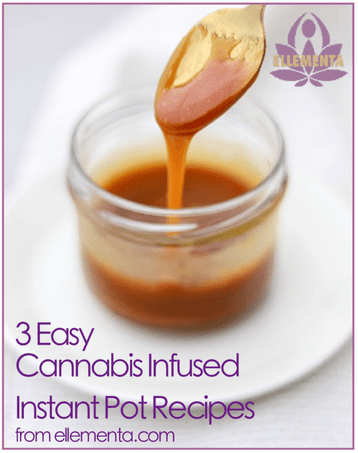Cooking:
Making Cannabutter

 Consuming cannabis through foods infused with cannabis properties (also called “edibles” or “medibles”) is a great way to gain the benefits of the medicinal plant without smoking.
Consuming cannabis through foods infused with cannabis properties (also called “edibles” or “medibles”) is a great way to gain the benefits of the medicinal plant without smoking.
The key to cooking with cannabis is to use fat because THC is fat soluble, and butter or oil are usually the ingredients of choice.
To release the active elements of cannabis such as the cannabinoids or terpenes, you need to heat up the plant material. Rather than using the buds of the cannabis flowers – the part that you’d more likely smoke or vape – you cook with the trim. Trim referrers to the stems and bits that you cut, pick, or sift out of the dried flower – the “leftovers.”
DIY Cannabutter or Canna Oil
This recipe comes from Mary Jane: The Complete Marijuana Handbook for Women by Cheri Sicard.
Ingredient list for 1 cup of cannabutter, canna-margarine, or infused oils:
- 1 ¼ cups unsalted butter or margarine, or 1 ¼ cups cooking oil: olive, vegetable, canola, corn, peanut, or grapeseed. (You can even infuse solid-at-room-temperature fats like coconut oil or vegetable shortening should you choose.)
- 1 ounce average- to high-quality trim or low-quality dried bud, or ½ ounce average-quality dried bud.
- About 4 cups water.
Slow cooker method.
Add butter or oil, plant material, and water to the slow cooker and cook on low for 6 to 10 hours. Some folks slow-cook their butter for as long as 2 to 3 days.
Stovetop method.
Place butter or oil, plant material, and water in a large Dutch oven on the stove top. Bring to a boil, reduce heat to very low, and simmer covered for 2 to 4 hours or more. Take care to monitor the liquid level often, adding water as necessary to always keep at least 3 cups in the pot.
Drain and strain.
Place a cheesecloth-lined strainer over a large pot or bowl, and strain the liquid through that.
WAIT! Before discarding plant material, pour a large kettle full of boiling water over the full strainer in order to wash through any extra butter or oil clinging to the plant material.
Allow everything to cool and then squeeze out as much liquid as possible from the plant material in the cheesecloth before discarding. Chill the water and oil, or water and liquid butter. The fat will rise to the top. Butter solidifies when cold, making it easy to simply lift the piece off. Rinse the butter chunk with cold, fresh water to remove any cannawater or plant material that might be clinging to it.
Now it’s time to strain one more time to remove as much sediment as possible. Place a double layer of cheesecloth over a strainer and pour the oil through. To strain butter, melt it, strain, and then chill again until solid. This second straining is optional, but taking the extra step will give you a cleaner, purer finished product.
You can use the butter you make in place of regular butter in your favorite recipes. Spread a teaspoon or two on toast, pancakes or bread. Bake it into garlic bread or use it to sauté your favorite vegetables such as zucchini and squash. Sky’s the limit!
CAVEAT: Be careful about dosing. The more cannabis you use – and the stronger it is – the more potent the butter. A little can go a long way. Read our piece on Edibles 101 to understand how consuming cannabis through edibles differs from other forms of consumption.
 Download our free recipe book about how to decarboxylate cannabis and make cannabis butters and oils in your Instant Pot!
Download our free recipe book about how to decarboxylate cannabis and make cannabis butters and oils in your Instant Pot!
Bonus Recipe: Infused Caramel Two Ways!




